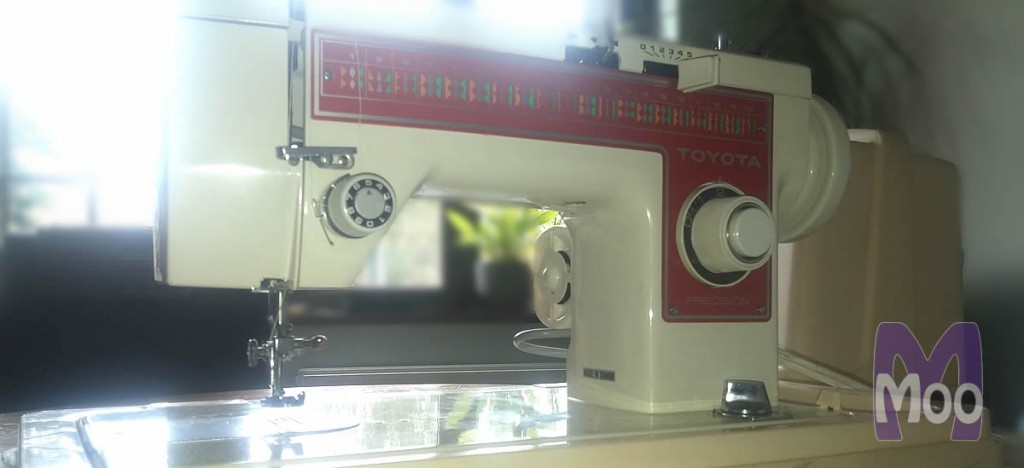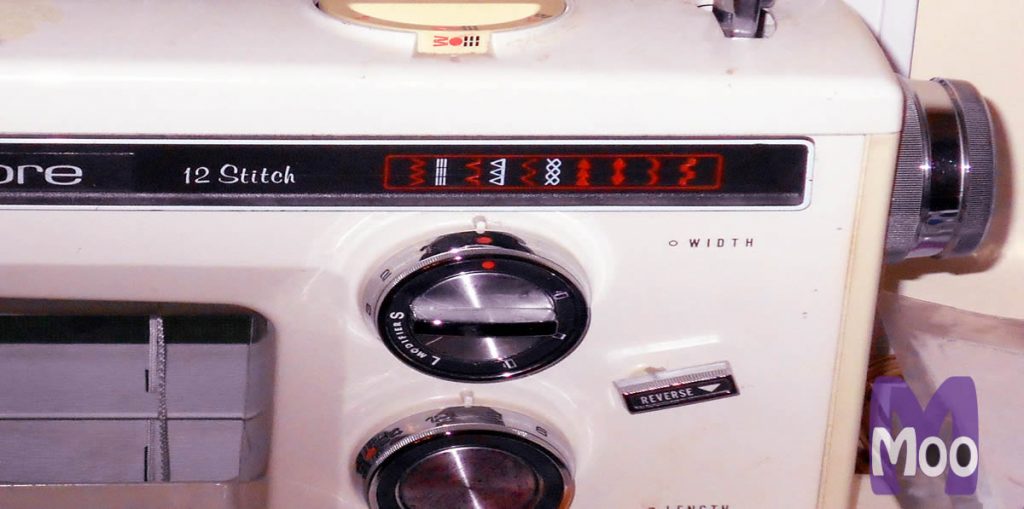The sewing machine has come a long way from the hand-cranked or foot-powered models used by earlier generations.
The modern lockstitch machine produces even stitches at high speed, making strong seams for garments or home décor.

How a Lockstitch is Made
A sewing machine has two threads. The top thread comes from a spool on top of the machine and is threaded through metal parts that lead the thread through a tension adjuster (which holds thread taut while stitches are formed), a take-up lever (which moves up and down with the needle) and the needle itself. The bottom thread is wound onto a bobbin (a small spool) and placed in a compartment under the needle.
When the needle carries the top thread down, the bobbin case rotates so that the top and bottom threads meet and lock together, forming a stitch. If tension is adjusted correctly, the two thread lock in between the two layers of fabric being sewn together. Thus the right and wrong sides of the stitching look the same.
 Stitch width and length adjustment dials on an older sewing machine
Stitch width and length adjustment dials on an older sewing machine
Parts to Know
In addition to the parts already mentioned, here are some other terms to know:
- The throat plate is the metal rectangle under the needle with a hole for the needle to pass through on its way to the bobbin.
- The presser foot is the part that holds the fabric as it passes under the needle. Feet may be changed for different types of sewing, such as a zipper foot or a zigzag foot.
- The feed dogs look like two small treads under the needle. They move the fabric forward under the presser foot and needle. When the reverse button is pushed, they reverse direction.
- A stitch width adjustment dial enables you to decide how far the needle will swing from left to right when making zigzag stitches. Set to zero, this makes a straight stitch.
- A stitch length adjustment dial allows the stitches to be long for basting and shorter for regular sewing.
Many parts make up a sewing machine. Consult the owner’s manual for your machine to learn about maintaining your machine and acquiring correct replacement parts.
Computerized machines may have a small computer screen instead of dials to turn. Consult your manual for information on selecting stitches and stitch patterns.
Extra Features
Some machines include a variety of decorative stitches. A knee-lift for the presser foot is a wonderful feature that enables you to keep both hands on your work as your knee lifts the foot and you pivot the fabric under the needle to turn a corner or sharp curved seam. Some machines include automatic needle threaders and/or one-touch buttonhole features.
While extra features are nice to have when you need them, a simpler machine can also do most jobs. It might take a few more steps, but you can make your own judgments about time and money versus convenience. A local sewing machine store can help you select a new machine or maintain the machine you already have.





